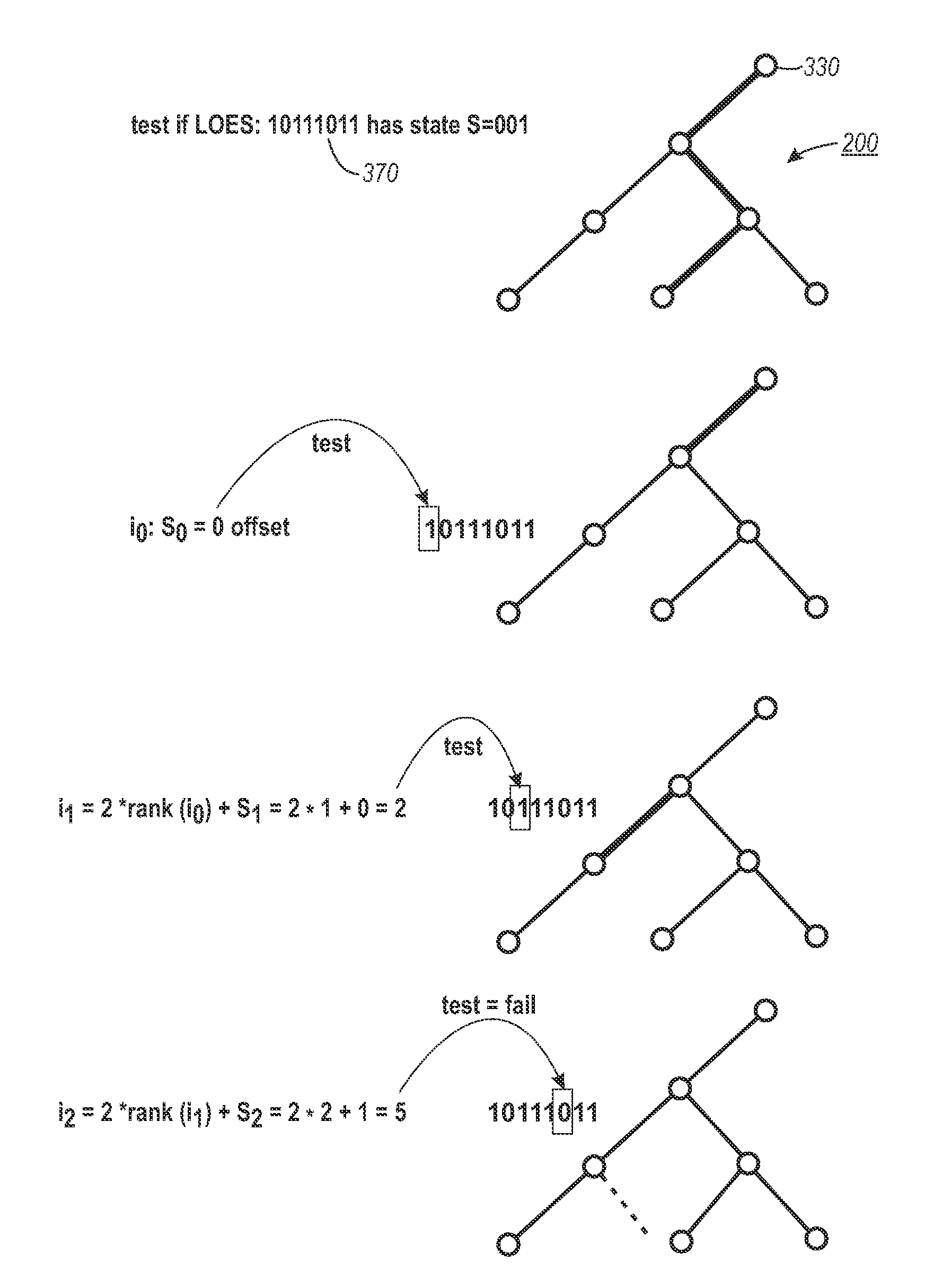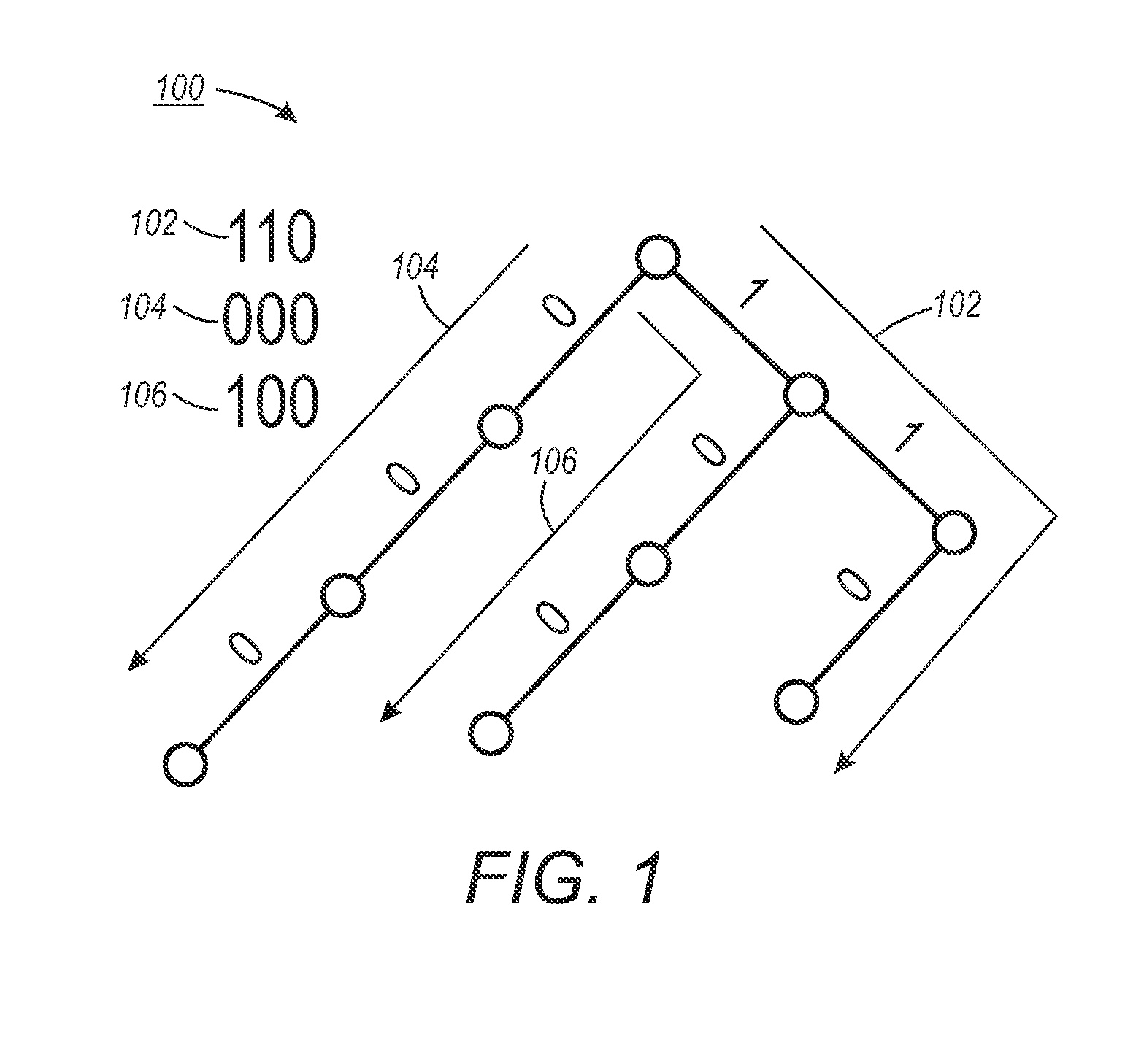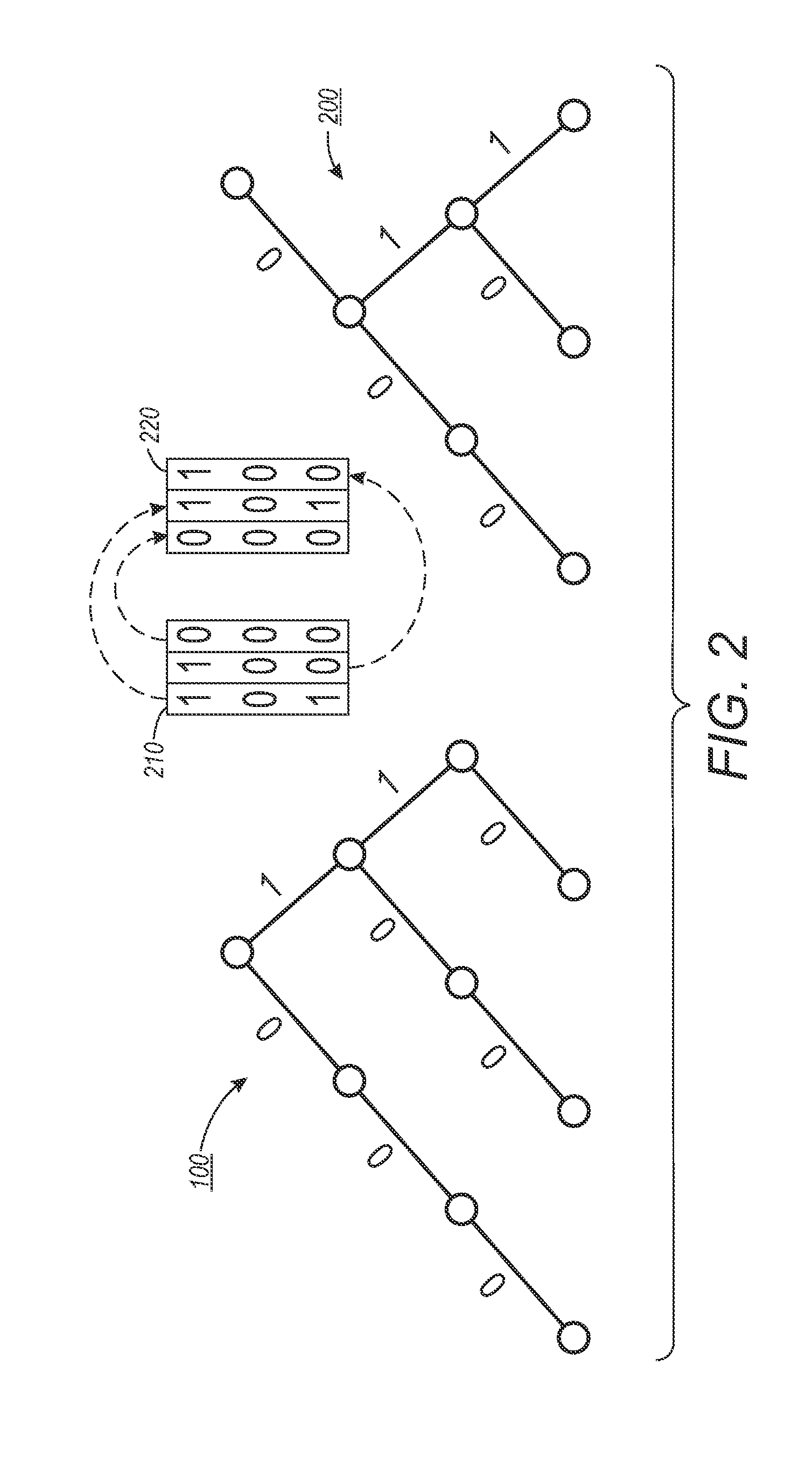Memory efficient state-set representation for planning
a planning and state-set technology, applied in the field of search, can solve the problems of redundancy of work and the inability to find linear space in time, and achieve the effect of reducing the number of searches
- Summary
- Abstract
- Description
- Claims
- Application Information
AI Technical Summary
Benefits of technology
Problems solved by technology
Method used
Image
Examples
Embodiment Construction
[0013]In the following discussion it is assumed that the encoding size of a search problem can be determined up front (e.g., before the start of the search). Further, without loss of generality, it is also assumed m is the number of bits required to encode any state for a given problem. Using these understandings any set of such states can be represented as an edge-labeled binary tree of depth m with labels false and true. Every path from the root to a leaf in such a tree corresponds to a unique state within the set (and vice versa) and can be reconstructed by the sequence of edge-labels from the root to the leaf. In the context of this work, these trees are referred to as prefix trees. All elements represented by a sub-tree rooted by some inner node share a common prefix in their representation denoted by the path from the root to that node.
[0014]In consideration of the above, and as will be expanded on in more detail in the following discussion, disclosed herein is a method and sy...
PUM
 Login to View More
Login to View More Abstract
Description
Claims
Application Information
 Login to View More
Login to View More - R&D
- Intellectual Property
- Life Sciences
- Materials
- Tech Scout
- Unparalleled Data Quality
- Higher Quality Content
- 60% Fewer Hallucinations
Browse by: Latest US Patents, China's latest patents, Technical Efficacy Thesaurus, Application Domain, Technology Topic, Popular Technical Reports.
© 2025 PatSnap. All rights reserved.Legal|Privacy policy|Modern Slavery Act Transparency Statement|Sitemap|About US| Contact US: help@patsnap.com



